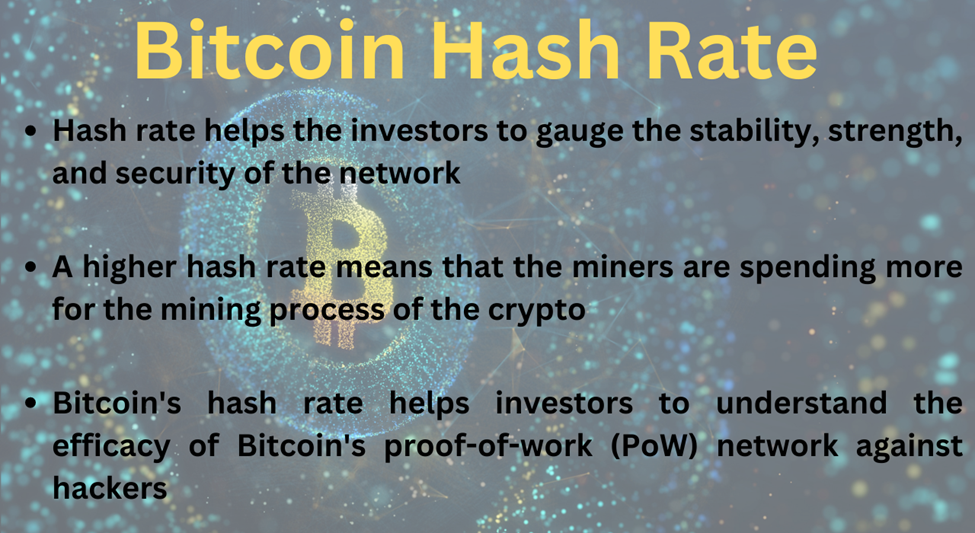Cryptocurrencies have attracted the interest of several investors in recent years and many new investors are now exploring opportunities in the sector. According to CoinMarketCap, there were over 21,000 cryptos in existence at the time of writing and more than 520 crypto exchanges.
However, crypto and blockchain technology, both became popular with the introduction of Bitcoin (BTC) in 2009, and the rest is history. Bitcoin (BTC) which is also the biggest crypto by market cap has gained notable traction in all these years while touching its highest level in 2021 when the craze over the crypto market was at its peak.
However, with the downtrend in the global financial market this year due to several challenges, the overall crypto market, along with Bitcoin (BTC) has witnessed a sharp decline.
But today, we are not going to talk about the crypto market or Bitcoin’s performance, but rather the Bitcoin hash rate. Many of you might have already heard of the term “hash rate” as it is a crucial part of cryptocurrency.
Let’s understand in detail what hash rate is and why is it so important:
Bitcoin hash rate and its importance
Hash rate can be described as how much computation power or processing is being contributed to a network for processing transactions.
Bitcoin’s hash rate is nothing different but refers to how much computation or processing power is being used by the network through mining. The mining of the BTC is a critical process that helps to maintain the crypto’s network.
For mining BTC, advanced computers are required that could solve complex mathematical problems which verify BTC transactions. For solving mathematical computations, each of the advanced computers or machines has to do a huge number of guesses per second, which costs a significant amount of electricity.
Meanwhile, Bitcoin is created through the use of blockchain technology. The blocks can be described as the files that stores data about the transactions and these blocks create a chain, with each block related to another.
For every transaction, a block is created which can be viewed publicly without being tampered with. Being similar to data files, the smaller blocks require lower power while the larger blocks require heavy power for verification, and that is where hashing comes into play.
Hashing a block means validating the integrity of the network transaction, and the miners receive BTC as a reward for hashing. By calculating the hash rate, the miners could predict their profitability. But each mining machine or computer differs from the other in terms of processing speed, memory, etc., and so the rate also varies.
The hash rate of any crypto helps traders in understanding the strength and security of its network. In other words, it helps investors in assessing how much Bitcoin’s proof-of-work (PoW) network is efficient against hackers.
A greater hash rate signifies better stability and security of the network, as it would require more energy, miners, and time to have control over the network and vice-versa.

Bottom line:
According to blockchain.com, the total estimated hash rate of Bitcoin was 266.583m terahashes per second (TH/s) as of writing. As said earlier, the higher hash rate signifies that the miners are spending more on the mining process by using advanced equipment.
So, it is important to understand the hash rate to gauge the stability and security of any crypto network.




